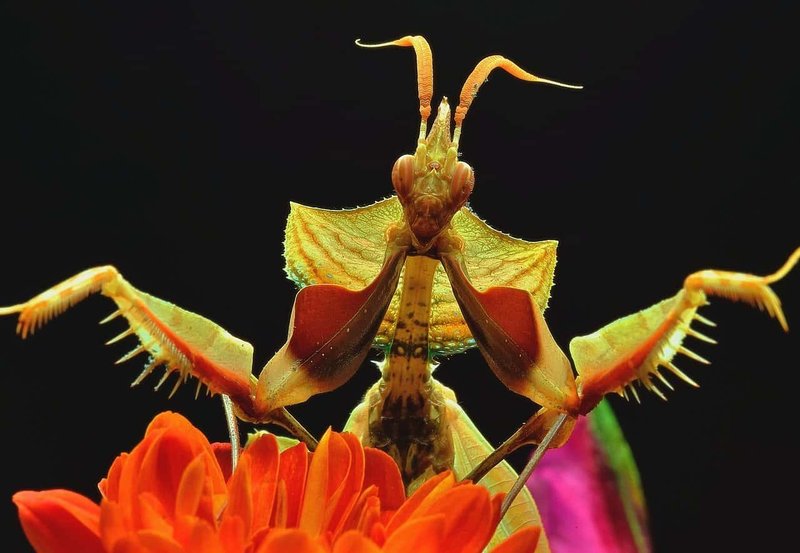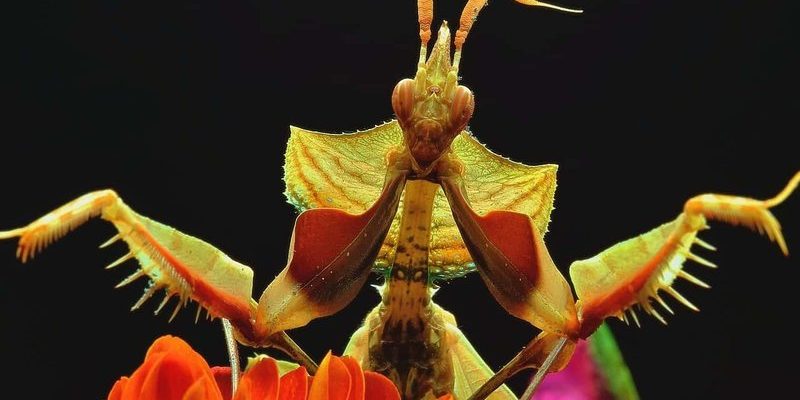
In this article, we’ll dig into 10 things you didn’t know about the mantid. From their striking appearance to their hunting prowess, there’s a lot to discover about these captivating insects. So grab a cup of coffee, and let’s embark on this journey together!
1. Incredible Camouflage
One of the most remarkable traits of the mantid is its incredible ability to blend into its surroundings. Think of a chameleon, but designed to imitate twigs and leaves instead. This talent for camouflage isn’t just for show; it plays a crucial role in their survival. By disguising themselves among foliage, mantids can avoid predators and ambush unsuspecting prey.
You might be wondering how they do this so effectively. Mantids have evolved specific colors and shapes that mimic their natural environment. Some species even take it a step further by holding still in a certain way, making them look like part of a plant. This behavior can be a lifesaver when larger animals are lurking around.
2. Masters of Disguise
Beyond just blending in, mantids can change their posture to enhance their camouflage. They often adopt a “praying” position, folding their front legs and looking like a twig or a flower. This isn’t just a cool party trick—it’s a strategic move that helps them stay unnoticed. Imagine waiting for the perfect moment to strike, all while remaining hidden in plain sight!
This skill is especially impressive when you consider that different species have different tactics. Some mantids are experts at mimicking flowers to draw in their prey, while others might take on the appearance of dead leaves. This versatility gives them a significant edge in various environments.
3. They Have an Impressive Diet
Mantids are not just picky eaters; they are skilled predators! Their diet primarily consists of other insects, like flies, beetles, and grasshoppers. You could say they have a taste for the gourmet side of nature. Their sharp mandibles and quick reflexes make them formidable hunters, often catching prey that is much larger than themselves.
You might be thinking, “But aren’t they vulnerable too?” Absolutely! While mantids are powerful predators, they’re also prey for birds, frogs, and even some larger insects. However, their hunting techniques and camouflage help them maintain a balanced spot in the food chain.
4. Unique Mating Rituals
Here’s where the mantid’s life gets a bit shocking—literally! Mantids are famous for their unique mating rituals, which often end in cannibalism. In many species, the female will sometimes eat the male after or even during mating. It might sound gruesome, but it’s a strategy that ensures the female gets the necessary nutrients for her eggs.
During mating, the male tries to approach cautiously, often engaging in a courtship dance to keep the female calm. Despite the risks, this mating behavior is not uncommon among mantids, and it might actually increase the chances of offspring survival.
5. Fascinating Life Cycle
Mantids go through several life stages, starting as eggs and hatching into nymphs. Imagine a tiny baby mantid that resembles a miniature version of its adult self, minus the wings. This nymph phase is crucial for their growth, as they molt several times before becoming adults. Each molting stage allows them to grow, shedding their exoskeleton like a snake.
This process isn’t just about growing bigger; it also prepares them for their role as predators. Each time they molt, they become more adept at hunting and surviving in their environment. Watching a mantid undergo metamorphosis can be as thrilling as witnessing a butterfly hatch!
6. They Can Turn Their Heads
One of the coolest features of mantids is their ability to turn their heads to look around. Unlike most insects, whose heads are pretty fixed in place, mantids have a flexible neck that allows them to swivel their heads in nearly a full circle. This gives them a remarkable range of vision to spot potential prey or threats.
Imagine being able to see behind you without turning your body! This trait is incredibly useful for spotting predators and planning their next move. It’s like having built-in surveillance for survival.
7. Communication Skills
Did you know that mantids have their own way of communicating? They might not speak in words, but they use body language, sounds, and even chemical signals to interact with each other. During mating season, for instance, males often produce soft sounds by rubbing their wings together, a process known as stridulation.
This communication isn’t just social; it’s a way for mantids to negotiate their sometimes dangerous relationships. By signaling to each other, they can indicate readiness to mate or warn one another of danger lurking nearby.
8. A Global Presence
Mantids are found all over the globe, except for Antarctica. They thrive in various environments, from rainforests to deserts, and their adaptability is impressive. Different species have unique traits that allow them to survive in their specific habitats.
You might be surprised to learn that there are over 2,400 species of mantids worldwide! Each species has adapted to local conditions, showcasing a fascinating diversity that reflects the beauty of evolution. This wide distribution means you can find mantids in many places, often right in your backyard!
9. Role in Ecosystems
Mantids play a vital role in maintaining healthy ecosystems. As predators, they help keep the populations of other insects in check. By controlling pest insects, mantids contribute to the balance of nature and benefit agriculture.
Without them, certain insect populations could explode, leading to problems for crops and gardens. So, the next time you see a mantid, remember that it’s more than just a bug—is a natural pest control agent!
10. Conservation Status
Many people don’t realize that mantids are facing threats to their populations due to habitat loss and pesticide use. While some species are abundant, others are becoming rare. Conservation efforts are essential to protect these fascinating insects and their habitats.
Supporting sustainable practices and creating insect-friendly environments can help mantids thrive. You can even create a little haven in your garden by planting native plants and avoiding harmful chemicals. Every small action counts!
In closing, mantids are truly remarkable creatures with unique traits and behaviors. From their amazing ability to blend into their environment to their critical role in the ecosystem, there’s so much more to these insects than meets the eye. So next time you spot a mantid, you’ll know just how special they are in the natural world!

